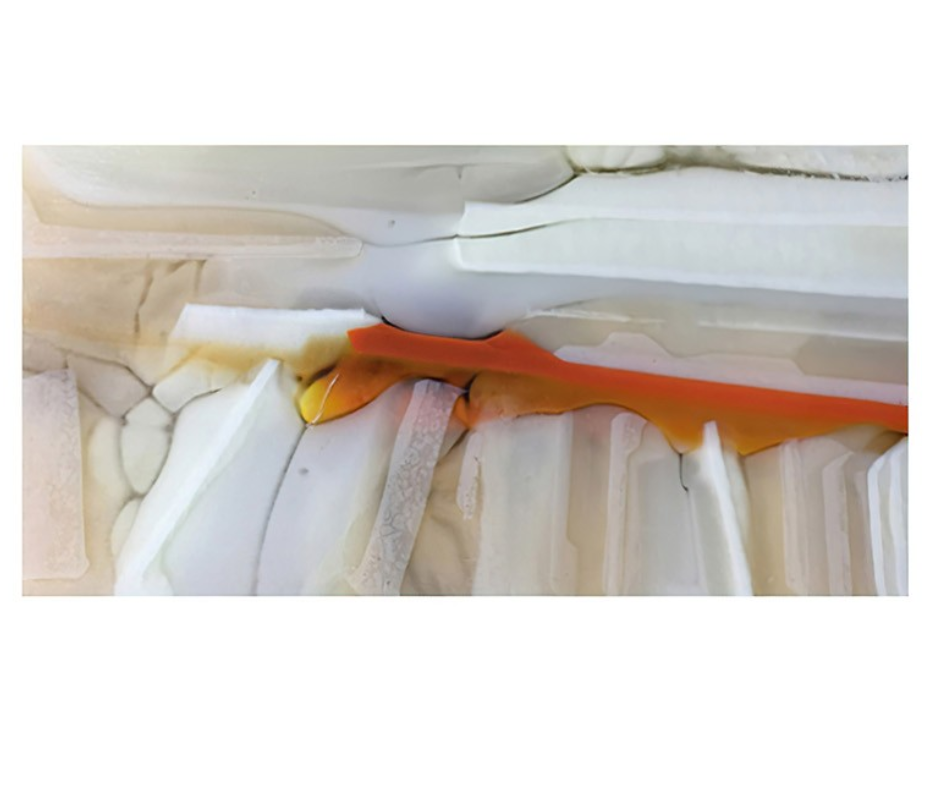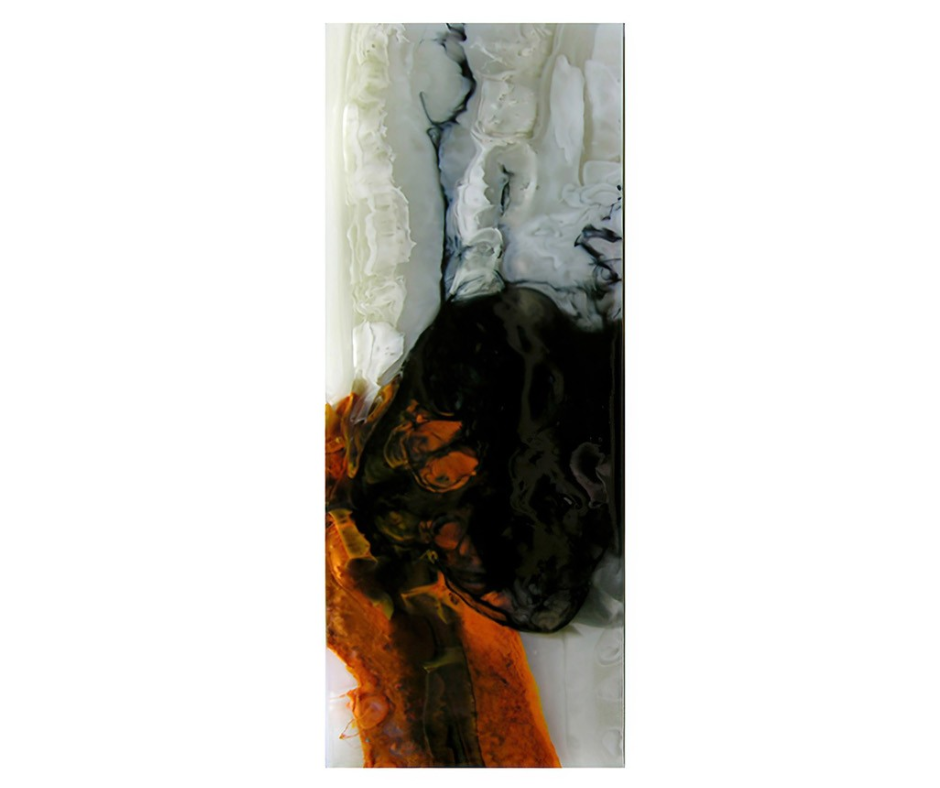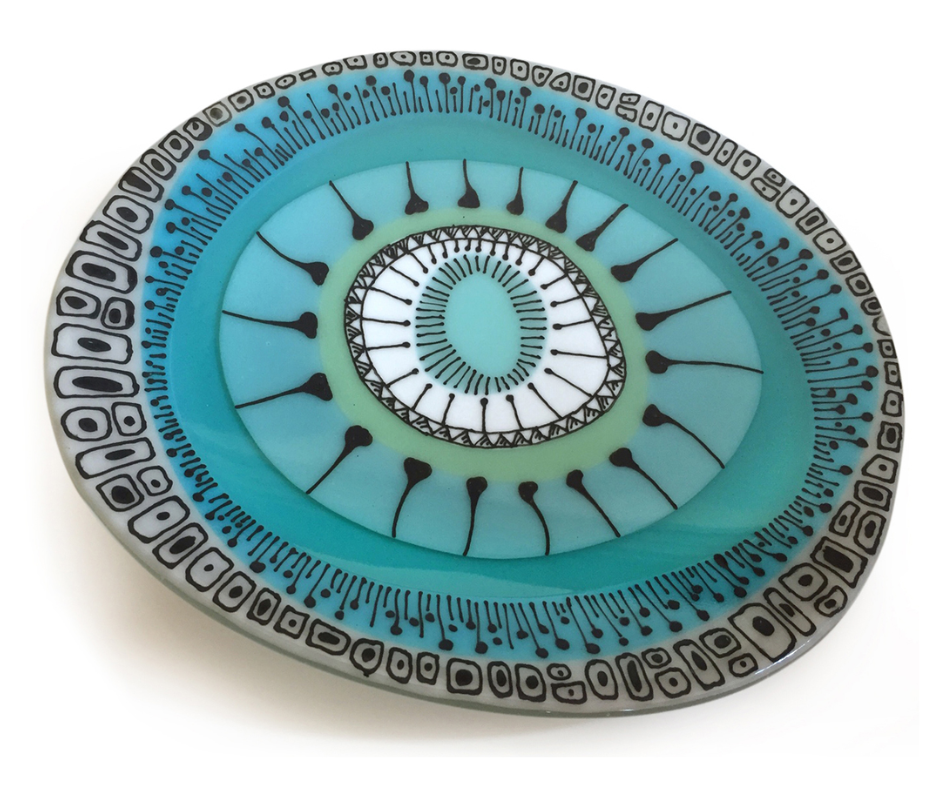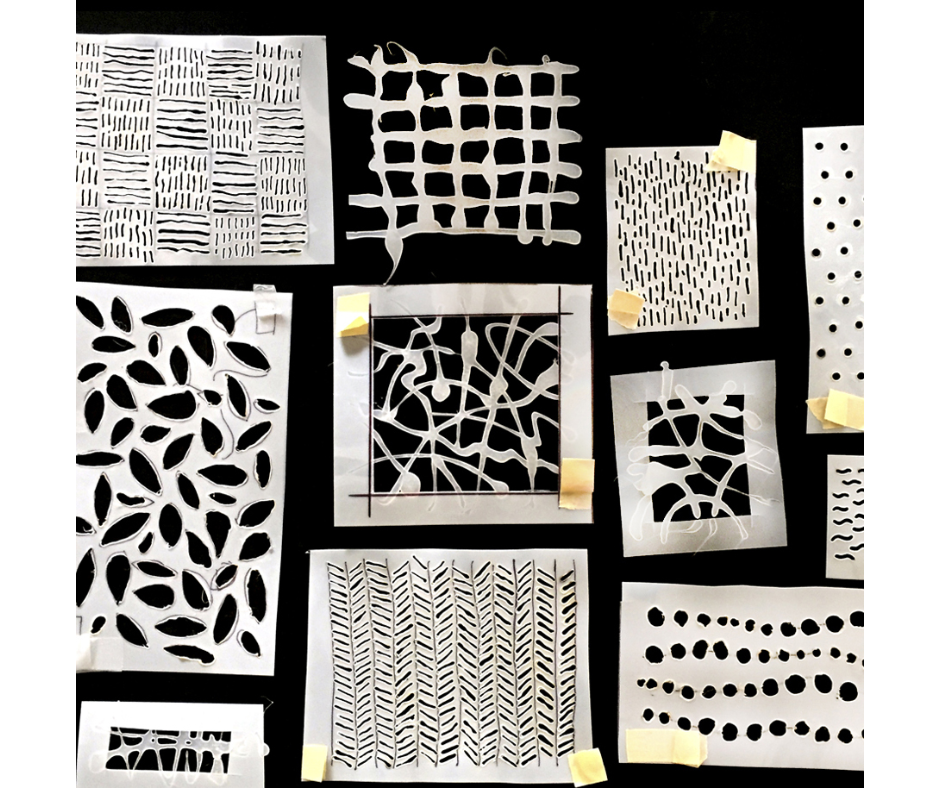 Image 1 of 6
Image 1 of 6

 Image 2 of 6
Image 2 of 6

 Image 3 of 6
Image 3 of 6

 Image 4 of 6
Image 4 of 6

 Image 5 of 6
Image 5 of 6

 Image 6 of 6
Image 6 of 6







K+K Creative: Design for Glass Artists
«Click Here to Register»
Class Level: All
Teacher: Kim Brill
We know it when we see it — but what exactly is good design?
Fused glass artists can see an outstanding piece of glass and know that it's good, because the human brain is adept at recognizing beauty. And often we say to ourselves: "How do they do that? How do they make work that wonderful?"
This course will investigate these questions: What makes a good piece good? Why is it beautiful? Are there lessons to be learned from well-designed work that can be applied in your own studio? Can you take your work to a new height without having to learn another technique? Can you learn to improve your work using the skills and techniques you already have?
The answer to all of the above is yes. Whether you are a beginner just starting to explore, or a seasoned artist with many workshops and lessons under your belt, you can advance your work with knowledge that transcends technique.
Some people are simply born with a great feel for good design. We've seen artists with little or no art education do outstanding work because they simply have an eye and an intuition for it. Kat and I are not in that group of innately gifted artists. We have to work at it. For most of us, it requires effort and practice. That said, there are things you can learn and principles you can apply to push your work forward. You can learn to think your way into good design. And the more you do it, the easier it gets. After awhile, it becomes intuitive.
We've seen it happen. Pretty soon you'll be in the grocery store, analyzing the package design on a carton of ice cream.
What this course is —and what it's not
We're not fond of the word "theory" in this context. It sounds intimidating. This is not a course in design theory. What this course teaches is practical, user-friendly and glass-specific ways to apply some basic design ideas to your fused glass.
Design for Glass Artists is, in part, about giving artists a few terms — a small design lexicon, if you will — to help them articulate, think about, and discuss design. Words like space division, contrast, and dominant element. If you can understand these terms, and talk about them to yourself, you are on your way to using them in your work.
Another thing: this is not a course that teaches a technique. Rather, it's a new way to think about how to use the techniques and skills you already have to give your work some thoughtful design structure and polish.
We just want to help you make better fused glass.
Learn design by doing what you already do.
This course is taught by looking at and talking about good fused glass work. A lot of work. Some of it you may recognize. We'll discuss what makes the pieces sing. It always comes down to our four main principles: Dividing the Space. Contrast, Dominant Element, and Grace Notes. It's kind of like forensic accounting, but with glass. And through the everyday miracle of Photoshop, we alter some images to show how they could look with less design consideration, or how so-so work can be improved by editing the spaces.
Learn to identify, talk about, and use the design concepts that make these pieces work.
About K+K Creative
K+K Creative is a collaborative partnership with Kim Brill and Kat Kramer Adair, and our online courses have been developed in cooperation with Helios Kiln Glass Studio in Austin, Texas.
Kat Adair is a jewelry designer, glass artist, college professor, 3-D modeling expert, former Apple technology trainer and general, all-around, multi-purpose geek. Her passions include teaching jewelry students, pate de verre and squirrels. Not necessarily in that order.
Kim Brill is a graphic designer, art director and glass artist, and glass instructor. Her glass work has appeared in the Bullseye Emerge international exhibit and Corning Museum of Art's New Glass Review. She's hoping to do more work in the area of glass education, and fewer logos.
«Click Here to Register»
Class Level: All
Teacher: Kim Brill
We know it when we see it — but what exactly is good design?
Fused glass artists can see an outstanding piece of glass and know that it's good, because the human brain is adept at recognizing beauty. And often we say to ourselves: "How do they do that? How do they make work that wonderful?"
This course will investigate these questions: What makes a good piece good? Why is it beautiful? Are there lessons to be learned from well-designed work that can be applied in your own studio? Can you take your work to a new height without having to learn another technique? Can you learn to improve your work using the skills and techniques you already have?
The answer to all of the above is yes. Whether you are a beginner just starting to explore, or a seasoned artist with many workshops and lessons under your belt, you can advance your work with knowledge that transcends technique.
Some people are simply born with a great feel for good design. We've seen artists with little or no art education do outstanding work because they simply have an eye and an intuition for it. Kat and I are not in that group of innately gifted artists. We have to work at it. For most of us, it requires effort and practice. That said, there are things you can learn and principles you can apply to push your work forward. You can learn to think your way into good design. And the more you do it, the easier it gets. After awhile, it becomes intuitive.
We've seen it happen. Pretty soon you'll be in the grocery store, analyzing the package design on a carton of ice cream.
What this course is —and what it's not
We're not fond of the word "theory" in this context. It sounds intimidating. This is not a course in design theory. What this course teaches is practical, user-friendly and glass-specific ways to apply some basic design ideas to your fused glass.
Design for Glass Artists is, in part, about giving artists a few terms — a small design lexicon, if you will — to help them articulate, think about, and discuss design. Words like space division, contrast, and dominant element. If you can understand these terms, and talk about them to yourself, you are on your way to using them in your work.
Another thing: this is not a course that teaches a technique. Rather, it's a new way to think about how to use the techniques and skills you already have to give your work some thoughtful design structure and polish.
We just want to help you make better fused glass.
Learn design by doing what you already do.
This course is taught by looking at and talking about good fused glass work. A lot of work. Some of it you may recognize. We'll discuss what makes the pieces sing. It always comes down to our four main principles: Dividing the Space. Contrast, Dominant Element, and Grace Notes. It's kind of like forensic accounting, but with glass. And through the everyday miracle of Photoshop, we alter some images to show how they could look with less design consideration, or how so-so work can be improved by editing the spaces.
Learn to identify, talk about, and use the design concepts that make these pieces work.
About K+K Creative
K+K Creative is a collaborative partnership with Kim Brill and Kat Kramer Adair, and our online courses have been developed in cooperation with Helios Kiln Glass Studio in Austin, Texas.
Kat Adair is a jewelry designer, glass artist, college professor, 3-D modeling expert, former Apple technology trainer and general, all-around, multi-purpose geek. Her passions include teaching jewelry students, pate de verre and squirrels. Not necessarily in that order.
Kim Brill is a graphic designer, art director and glass artist, and glass instructor. Her glass work has appeared in the Bullseye Emerge international exhibit and Corning Museum of Art's New Glass Review. She's hoping to do more work in the area of glass education, and fewer logos.
















